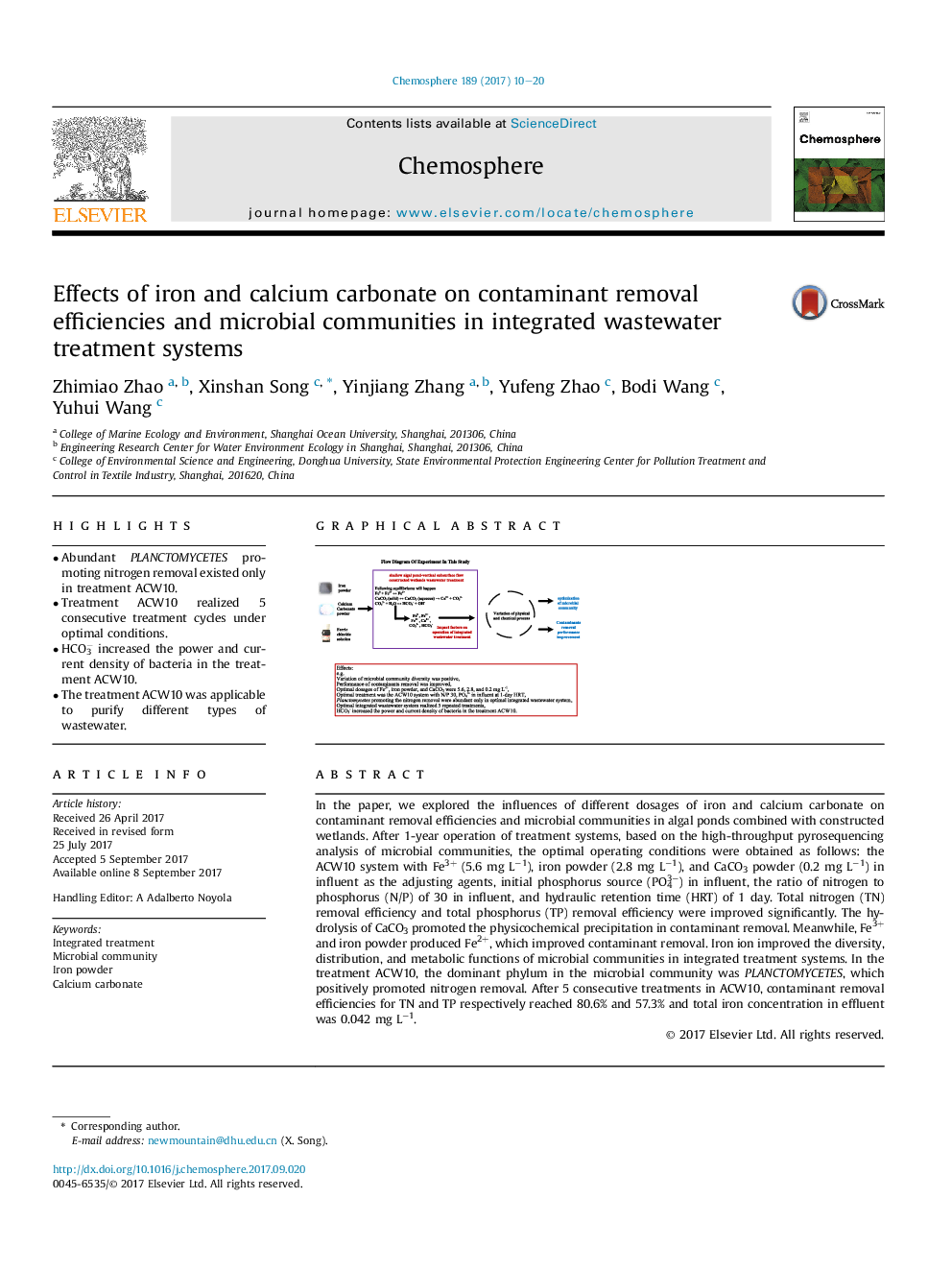| کد مقاله | کد نشریه | سال انتشار | مقاله انگلیسی | نسخه تمام متن |
|---|---|---|---|---|
| 5745904 | 1618782 | 2017 | 11 صفحه PDF | دانلود رایگان |
- Abundant PLANCTOMYCETES promoting nitrogen removal existed only in treatment ACW10.
- Treatment ACW10 realized 5 consecutive treatment cycles under optimal conditions.
- HCO3â increased the power and current density of bacteria in the treatment ACW10.
- The treatment ACW10 was applicable to purify different types of wastewater.
In the paper, we explored the influences of different dosages of iron and calcium carbonate on contaminant removal efficiencies and microbial communities in algal ponds combined with constructed wetlands. After 1-year operation of treatment systems, based on the high-throughput pyrosequencing analysis of microbial communities, the optimal operating conditions were obtained as follows: the ACW10 system with Fe3+ (5.6 mg Lâ1), iron powder (2.8 mg Lâ1), and CaCO3 powder (0.2 mg Lâ1) in influent as the adjusting agents, initial phosphorus source (PO43â) in influent, the ratio of nitrogen to phosphorus (N/P) of 30 in influent, and hydraulic retention time (HRT) of 1 day. Total nitrogen (TN) removal efficiency and total phosphorus (TP) removal efficiency were improved significantly. The hydrolysis of CaCO3 promoted the physicochemical precipitation in contaminant removal. Meanwhile, Fe3+ and iron powder produced Fe2+, which improved contaminant removal. Iron ion improved the diversity, distribution, and metabolic functions of microbial communities in integrated treatment systems. In the treatment ACW10, the dominant phylum in the microbial community was PLANCTOMYCETES, which positively promoted nitrogen removal. After 5 consecutive treatments in ACW10, contaminant removal efficiencies for TN and TP respectively reached 80.6% and 57.3% and total iron concentration in effluent was 0.042 mg Lâ1.
256
Journal: Chemosphere - Volume 189, December 2017, Pages 10-20
